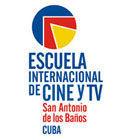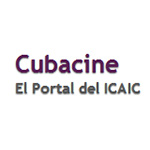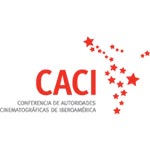Nace en Bolivia. Egresada de bachiller y estudios de Fotografía por tres años en la “Ecole des Arts et Métiers” de Vevey, Suiza, donde obtiene un título profesional y mención especial. En una etapa posterior, formación profesional en guiones, dirección y producción de videos en Chile, y en talleres de Cine en U.S.A, Cuba y Bolivia.
Como fotógrafa, ha participado en exposiciones colectivas y unipersonales en Suiza, Canadá, Alemania (Photokina), Francia, España, U.S.A. (Nueva York), Brasil, Chile, Uruguay, Argentina, además de varias ciudades de Bolivia. Premios internacionales - de Unicef, Habitat Canadá, Argentina, España- y nacionales. En 1988 publica un libro de fotografía de 100 imágenes -en blanco y negro y color- del mundo andino boliviano, titulado Tierra Adentro. Capacitadora de numerosos talleres en Bolivia, Chile y Ecuador, y guionista, fotógrafa o supervisora de 60 producciones audiovisuales en un centro de audiovisuales educativos (AVE) de propia creación y dirección (en 1980).
Ha producido documentales, clips musicales y argumentales. Ganadora de tres primeros premios nacionales: Gran premio “Cóndor de Plata” 1991 por mejor guión y dirección El hombre símbolo; Gran Premio “Cóndor de Plata” y "Mazorca de Plata" 1992 A los pies del Tatala y Premio Nacional “Jorge Ruiz” Para Elisa (1993). Además, obtuvo el Premio internacional mejor banda sonora por El Fragor del silencio (1999) y el Premio Municipal por su trayectoria artística (2005).
Otras producciones en las que ha participado son: Video niño, un taller de video para adolescentes de un orfanato, y su universo; Cantata Elay, registro de una puesta en escena; Solo Pancho, ficción sobre niños del cementerio; Fragor del Silencio, documental experimental sobre un terremoto; Los niños al parlamento.
Sus producciones han sido exhibidas en Uruguay, Perú, Chile, Argentina, y U.S.A. en festivales internacionales como: Chicago Film Festival (1994, 2006); Toronto Film Festival (1994), Festival de Cine y Video de Viña del Mar, La Mujer y el Cine (Mar del Plata,1994), Festival de Rosario, Festival de Cine Punta del Este (2005), Festival de Salta (2006) y en varios encuentros latinoamericanos de video.
Experiencia inicial en cine como fotógrafa de escena (foto fija). En Argentina, ayudante de dirección en el largometraje La redada en 1988, y asistente de dirección en Caminos del Maíz (1989), Después del último tren (1990). Adaptación de la novela a guión literario. Dirigió el cortometraje en 16 mm Backdoor (Nueva York). Co-guionista del largometraje Carga sellada, ganadora del concurso de guiones de CONACINE 1999, y fondo Ibermedia 2005. Guionista y directora de largometrajes como Esito sería… en 2004, Patricia, una vez basta en 2005, Flor y lápida, documental 2007 y guionista de La Juana.

Bolivian filmmaker Julia Vargas Weise, after graduating from high school, took a three year course in photography at the Ecole des Arts et Métiers from Vevey, Switzerland, where she got a professional certificate and a special mention. Later, she took formal training in scripts, directing and producing videos in Chile, and in workshops on films in the U.S.A, Cuba and Bolivia.
As a photographer, she has participated in collective and one-person exhibitions in Switzerland, Canada, Germany (Photokina), France, Spain, U.S.A. (New York), Brazil, Chile, Uruguay, Argentina, as well as in various cities in Bolivia. She has received national prizes and international ones from UNICEF, Habitat Canada, Argentina and Spain. In 1988 she published a book of 100 black and white and color photographs with the theme of the Bolivian Andean world with the title: Tierra Adentro (Inland). She has been instructor at many workshops in Bolivia, Chile and Ecuador, and scriptwriter, photographer or supervisor of 60 productions of audiovisuals at a center for educational audiovisuals of her own creation and direction (in 1980).
She has produced documentaries, music and narrative video. She has won three national prizes:
Grand prize Cóndor de Plata 1991 for the best script and direction in the film El hombre símbolo; Grand Prize Cóndor de Plata and Mazorca de Plata 1992 for A los pies del Tatala and National Prize “Jorge Ruiz” for Para Elisa. (1993); International Prize to best soundtrack: El Fragor del silencio (1999); Municipal prize for her artistic career (2005)
Other productions: Video Niño, a workshop on video for adolescents living in an orphanage and their universe; Cantata Elay, recording of a staging; Solo Pancho, fiction about children at the cemetery; Fragor del silencio experimental documentary about an earthquake, and Los niños al parlamento. Her films have been exhibited in Uruguay, Peru, Chile, Argentina and the USA in international festivals such as: “Chicago Film Festival” 1994, 2006 “Toronto Film Festival” 94, “Festival of Movie and video of Viña del Mar”, “Woman and the movie” (Mar del Plata) 94, "Festival of Rosario" , Festival of Cine Punta del Este (2005), Festival of Salta 2006 and in several Latin American meetings for video makers.
Her initial experience at the movie was as a stage photographer (still photograph). In Argentina, she was assistant director in the feature film La redada in 1988, and assistant director in Caminos del Maíz, 1989, later, she was assistant director in El último tren in 1990. She adapted the novel to a literary script. She directed the short film in 16 mm Backdoor (New York). She was co-scriptwriter of the feature film Carga sellada, she has won script contests in CONACINE 1999, and Fondo Ibermedia 2005, she has been the scriptwriter and director of feature films such as Esito sería… in 2004, Patricia, una vez basta in 2005, Flor y lápida documentary in 2007 and scriptwriter of La Juana.
References in the multimedia
Esito sería... La vida es un carnaval, 2004, Direction
Web: www.juliavargas.com
 “Nuestro objetivo final es nada menos que lograr la integración del cine latinoamericano.
Así de simple, y así de desmesurado”.
“Nuestro objetivo final es nada menos que lograr la integración del cine latinoamericano.
Así de simple, y así de desmesurado”.













